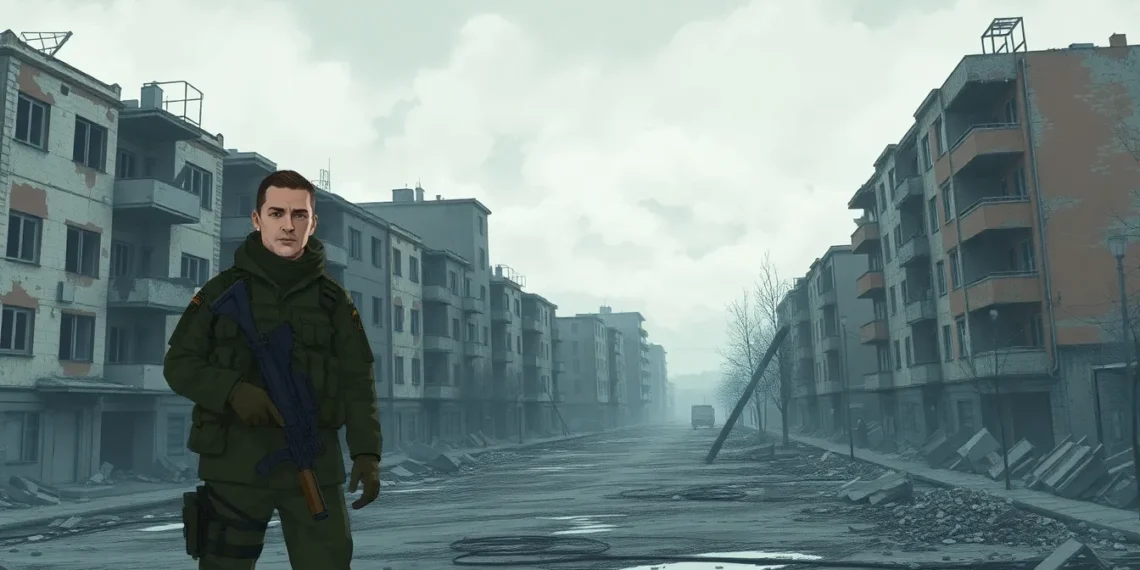The conflict in Ukraine has been a topic of intense discussion and debate, sparking curiosity and concern worldwide. As the situation unfolds, many are left wondering about the human cost of this ongoing war. Just how many Russians have lost their lives in this turbulent chapter of history?
While numbers can be as slippery as a greased pig at a county fair, understanding the toll of this conflict is crucial for grasping its impact. With estimates varying and information often shrouded in secrecy, the quest for clarity can feel like searching for a needle in a haystack. Join the exploration into the complexities of casualty figures and the broader implications that resonate far beyond the battlefield.
Overview of the Conflict
The conflict in Ukraine began in 2014 with the annexation of Crimea by Russia. Escalating tensions led to armed confrontations between Russian forces and Ukrainian military groups. Miscommunication and misinformation complicate the narratives surrounding casualty figures. Accurate estimates of Russian military losses are challenging to pinpoint due to state-controlled reporting.
Data from various sources indicate that Russian deaths in Ukraine reach significant numbers. As of October 2023, estimates suggest that between 15,000 and 35,000 Russian soldiers may have died. Official Kremlin communications often downplay these figures, fueling skepticism about transparency. Separate independent analyses propose that the actual numbers could be higher, citing discrepancies in reported data.
Russian and Ukrainian civilian casualties also contribute to the humanitarian crisis. Reports indicate that thousands of civilians have died, leading to widespread displacement. International organizations, including the United Nations, attempt to monitor the situation but face difficulties in estimating precise numbers.
Understanding the human cost entails acknowledging the broader implications of the conflict. As the war continues, each casualty deepens the impact on families and communities. Moreover, the longstanding animosities might influence future peace negotiations.
Tracking casualty numbers remains crucial for comprehending the conflict’s full scope. Researchers and journalists strive to offer accurate information, despite the lack of official clarity. This conflict marks a significant chapter in modern history, shaping geopolitical dynamics in Eastern Europe.
Current Estimates
Estimates regarding Russian casualties in Ukraine capture a wide range of figures. The ongoing conflict complicates efforts to attain precise numbers.
Official Russian Figures
Official figures from the Kremlin report significantly lower casualties compared to independent estimates. Public statements often indicate about 6,000 Russian soldiers have died. This figure contrasts starkly with analyses from various observers, raising questions about the accuracy of state-controlled narratives. Transparency remains a challenge as government sources tend to downplay military losses. Maintaining authoritative control over data shapes the public’s perception of the conflict and its implications.
Independent Estimates
Independent analyses provide a much broader range for Russian military casualties, suggesting between 15,000 and 35,000 fatalities as of October 2023. Analysts highlight discrepancies based on battlefield reports and intercepted communications, leading to higher estimates than those from official sources. Examining reports from NGOs and military experts reveals an even more complex picture, indicating several factors influencing casualty rates. These estimates underscore the difficulties in verifying data amid ongoing hostilities. Understanding this range of uncertainty is crucial for comprehending the multifaceted human cost of the conflict.
Factors Influencing Death Toll
Various elements shape the casualty figures in the ongoing conflict. Combatant and non-combatant losses represent distinct categories with different implications.
Combatant vs. Non-Combatant Casualties
Russian military losses are often estimated between 15,000 and 35,000, indicating a significant impact on armed forces. Military reports and independent analyses also suggest higher numbers than the Kremlin’s reported 6,000. Meanwhile, civilian casualties further complicate the picture, with thousands of civilians reported dead due to military actions. Each loss, whether a soldier or civilian, affects families and communities deeply, demonstrating the tragic cost of the conflict. Accurate distinctions between these categories remain crucial, influencing public perception and policy discussions.
Geographic and Tactical Considerations
Geography plays a vital role in the death toll. Combat occurs in varied terrains, impacting strategies and casualty rates. Urban centers witness higher civilian casualties as fighting intensifies. Tactical decisions, such as the choice of offensive strategies, also influence death tolls and operational success. Regions with ongoing battles show increased reported losses. Alternatively, areas with less intense fighting maintain lower figures. Rapid changes in tactics or troop movements can lead to fluctuations in casualty estimates, adding to the complexity of understanding the war’s true cost.
Reporting Challenges
Challenges in reporting accurate casualty figures in Ukraine add complexity to understanding the human cost of the conflict. The disparity between official numbers and independent estimates often leads to confusion.
Information Accuracy and Verification
Seeking accurate information remains a daunting task. Numerous sources report drastically different figures, often lacking a reliable method of verification. Various independent organizations analyze intercepted communications, battlefield reports, and testimonies, which highlight significant discrepancies. Official Kremlin figures indicate approximately 6,000 casualties, while credible estimates now range from 15,000 to 35,000 Russian soldiers. This gap complicates any comprehensive understanding of the true toll of the war. Researchers continue striving for clarity, gathering data to present a more accurate picture amidst propaganda and misinformation.
Media Coverage and Propaganda
Media plays a crucial role in shaping perceptions around the conflict. State-controlled outlets often provide sanitized narratives, limited in their accuracy. Independent media faces restrictions that hinder objective reporting, resulting in skewed representations of casualty numbers. Misinformation spreads rapidly on social media, impacting public understanding. This environment complicates efforts to discern the reality of the situation in Ukraine. Conflicting reports from various news sources create a landscape where propaganda often overshadows factual reporting. Accurate media coverage is essential for fostering informed discussions about the ongoing conflict.
Implications of the Death Toll
The human cost of the conflict in Ukraine results in far-reaching implications for Russia. Understanding the death toll provides insight into the political landscape and affects public sentiment.
Political Ramifications
Political leaders face increased scrutiny as casualty figures rise. Decisions regarding military strategies may hinge on these losses, directly influencing policy discussions. Significant casualties can challenge the Kremlin’s narrative of success, prompting calls for accountability and transparency. International relations also shift in response to the perceived humanitarian crisis. Countries may reconsider their diplomatic stances, leading to potential sanctions or changes in alliances, all shaped by the scale of reported Russian deaths.
Impact on Public Opinion in Russia
Public opinion can sway dramatically with the rising death toll. Perceptions of the military campaign vary, often depending on the flow of information. A higher number of casualties might lead to growing discontent among citizens. Political opposition may gain traction by highlighting the human cost, leveraging dissatisfaction to challenge the government’s stance. Additionally, state-controlled narratives struggle against increasing public awareness of casualties, which fuels debates on the war’s legitimacy. Ultimately, public sentiment plays a critical role in shaping domestic policies and future electoral outcomes.







